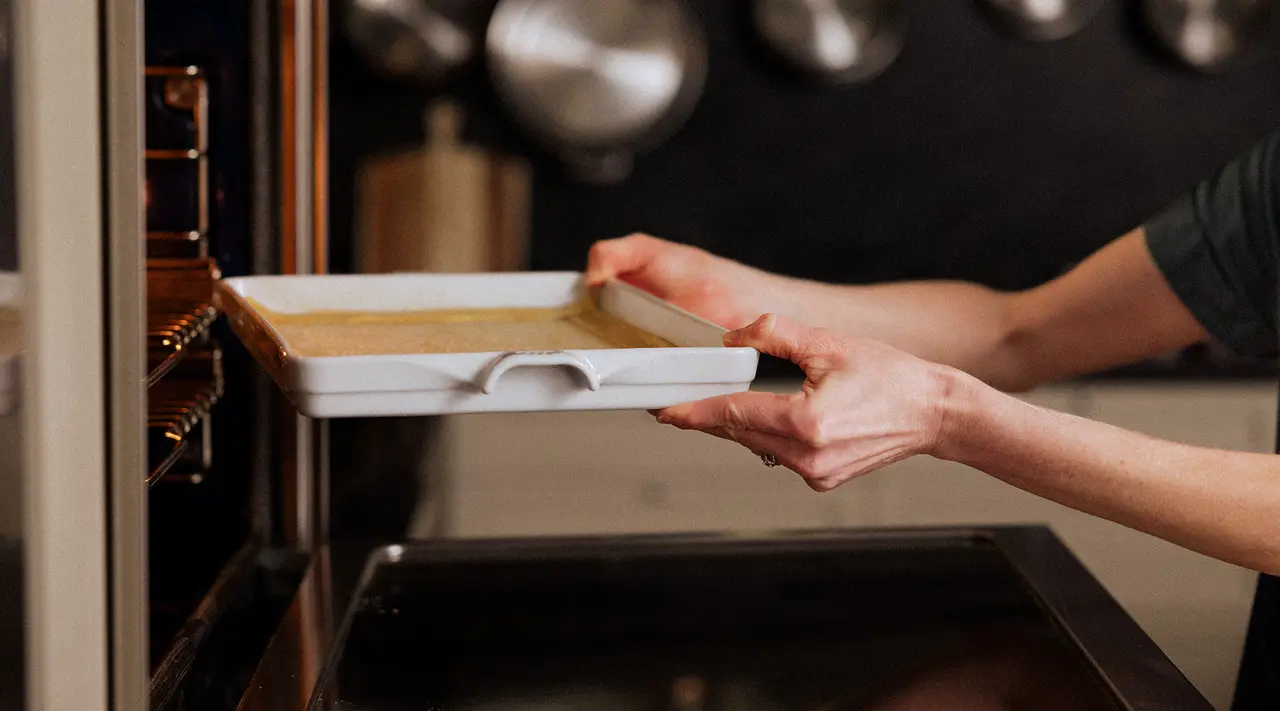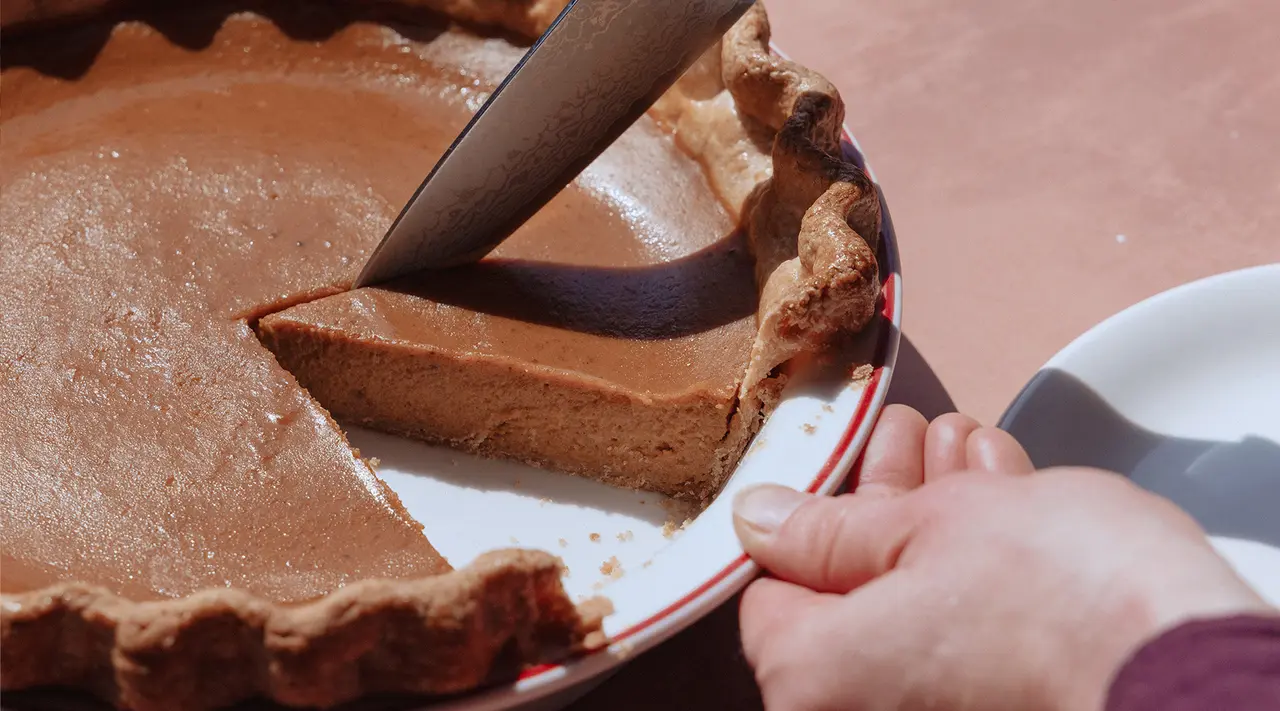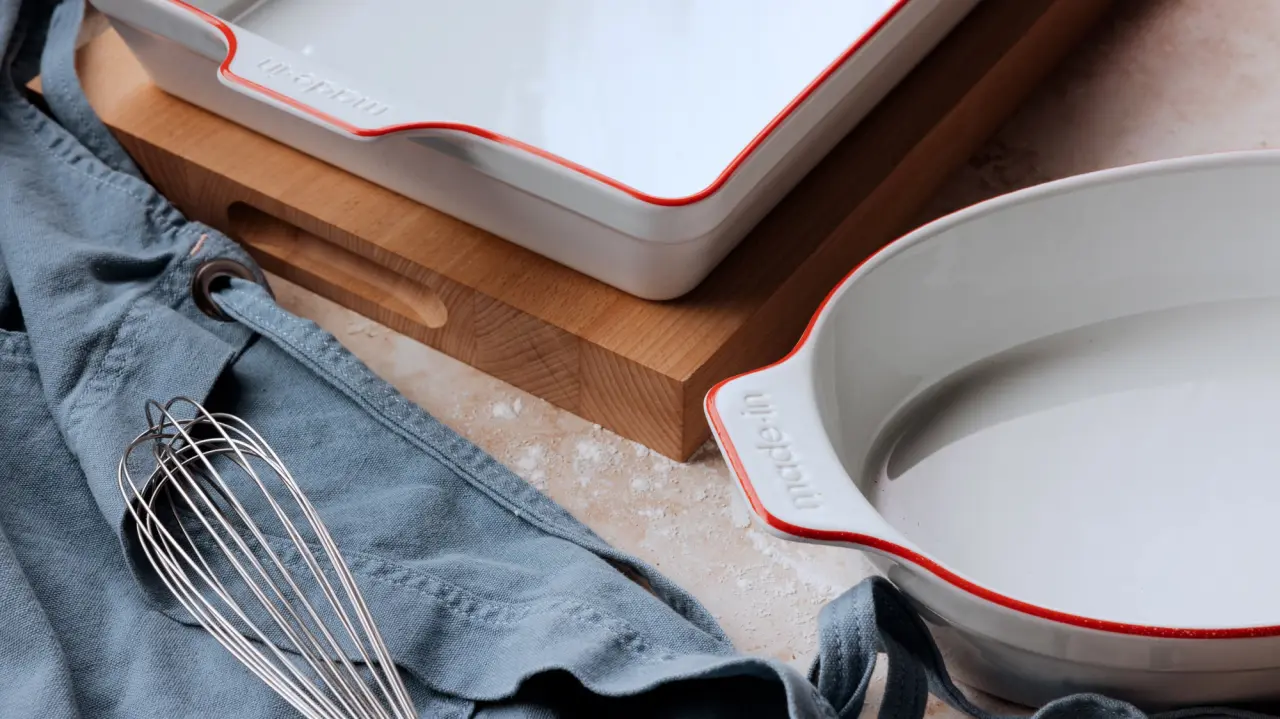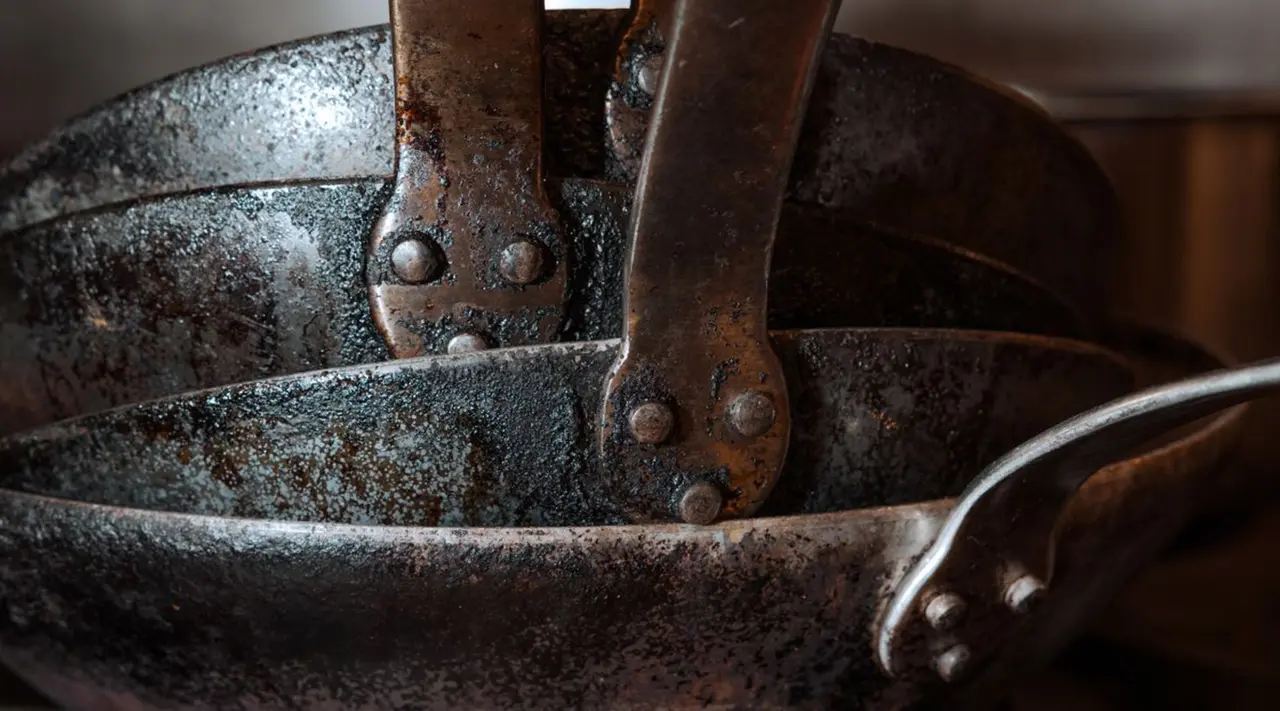Porcelain is, by far, our favorite type of bakeware. Both thermal shock resistant and oven safe up to 650F, this dainty-sounding material is much tougher than it looks. That said, porcelain still needs to be treated gently—particularly when it comes to washing.
Thankfully, you won’t need much elbow grease to clean these naturally non stick, dishwasher-safe pieces. Here are some of our favorite methods to get (and keep) your bakeware sparkling clean.
Soap and Water

A quick scrub with warm water and a drop of dish soap should work for nearly all types of mess commonly found in bakeware. If there's a burnt-on mess that just won’t budge, try soaking your pan with warm water and soap. After about ten minutes, any remaining grime should have loosened enough to scrape off with a wooden spatula, spoon, or sponge (anything will work here, just not an abrasive or sharp-edged utensil like a knife).
Dump the water, then rinse and dry.
Baking Soda

Baking soda is slightly abrasive, making it an effective tool for cleaning burnt or stained porcelain bakeware. Sprinkle a little baking soda onto the surface of the pan, add a few drops of dish soap, then fill the pan with warm water. Allow to soak for 15–20 minutes before gently scraping the stained or dirty areas with a non-abrasive spatula or spoon, or with the soft side of a dish sponge. Rinse and dry.
Baking Soda and Vinegar

If you’re still struggling to clean your pan, try combining baking soda with vinegar. The mixture will create carbon dioxide bubbles, which can help further dislodge really stubborn burnt-on food and oil.
First, sprinkle baking soda onto the affected areas of your pan, then pour on a small amount of distilled white vinegar. While the mixture is still foamy, scrub the pan thoroughly, then rinse and dry.
Ready to Clean?
Don’t let the prospect of cleaning up stop you from using your porcelain bakeware. We can pretty much guarantee that you’ll find a method that works for you—even if it requires a little experimentation. The payoff? You get to make killer homemade baked goods—like Bourbon Sticky Buns—whenever you want.































